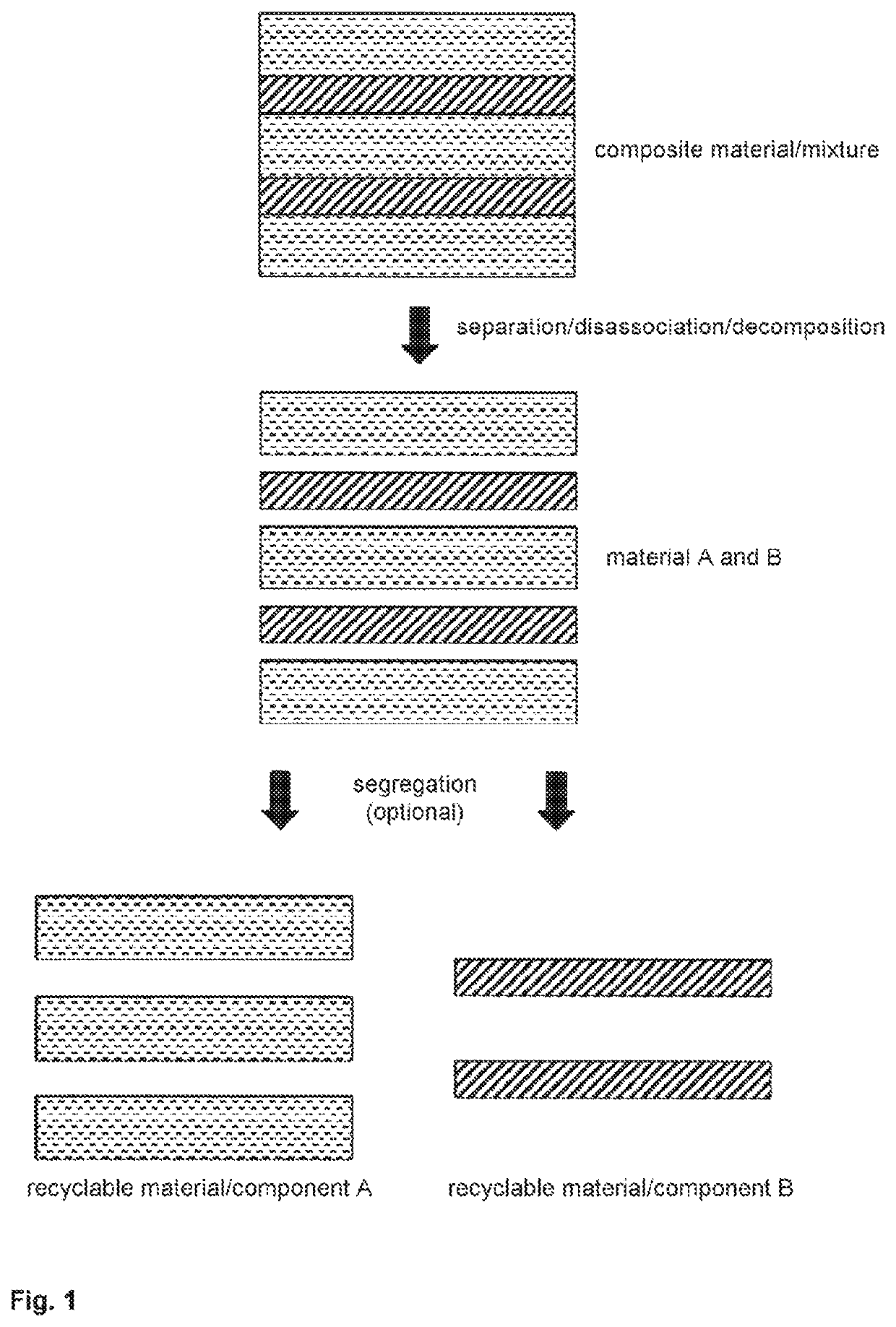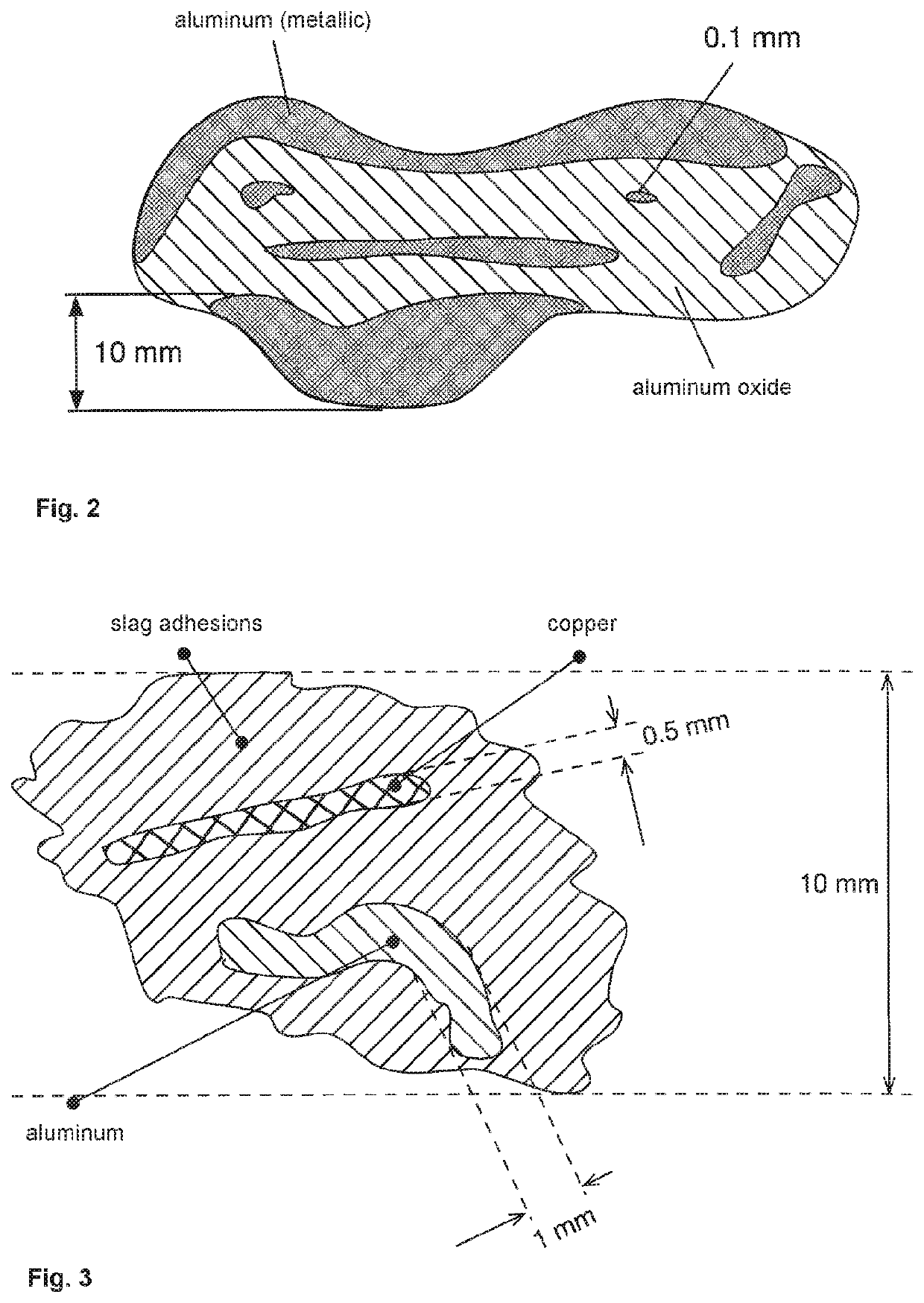Method and device for separating composite materials and mixtures, in particular solid-material mixtures and slags
a composite material and mixture technology, applied in grain treatment, transportation and packaging, other domestic articles, etc., can solve the problems of increasing environmental impact, waste that occurs after their use (end of life) in particular, and well-known problems, and achieves the effect of reducing the quantity of raw materials in the industry, and reducing the quantity of raw materials
- Summary
- Abstract
- Description
- Claims
- Application Information
AI Technical Summary
Benefits of technology
Problems solved by technology
Method used
Image
Examples
Embodiment Construction
lass="d_n">[0066]The following embodiments are examples and are not intended to limit the invention in any way.
[0067]FIG. 1 schematically shows the different steps of one embodiment of the method according to the invention. First, the bond at the contact surfaces of the different materials of the composite material or of the mixture is severed (i.e. broken up or decomposed) and then the different materials can optionally be segregated from each other so as to recover the homogenous recyclable material (i.e. the original components of the composite material / mixture).
[0068]FIG. 2 shows a possible structure of the waste products slag and aluminum dross that occur both in primary processing and in subsequent processing of metals, in particular aluminum. During a reduction process, in which aluminum oxides are processed into metallic aluminum, for example, a layer consisting of metallic aluminum and aluminum oxides forms on the surface of the aluminum prior to its casting. This layer is ...
PUM
| Property | Measurement | Unit |
|---|---|---|
| angle | aaaaa | aaaaa |
| angle | aaaaa | aaaaa |
| size | aaaaa | aaaaa |
Abstract
Description
Claims
Application Information
 Login to View More
Login to View More - R&D
- Intellectual Property
- Life Sciences
- Materials
- Tech Scout
- Unparalleled Data Quality
- Higher Quality Content
- 60% Fewer Hallucinations
Browse by: Latest US Patents, China's latest patents, Technical Efficacy Thesaurus, Application Domain, Technology Topic, Popular Technical Reports.
© 2025 PatSnap. All rights reserved.Legal|Privacy policy|Modern Slavery Act Transparency Statement|Sitemap|About US| Contact US: help@patsnap.com



